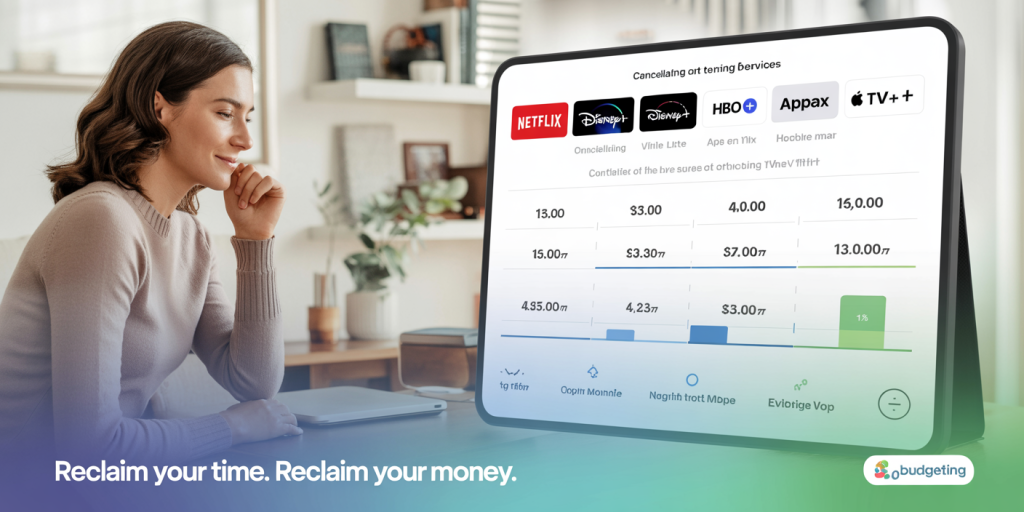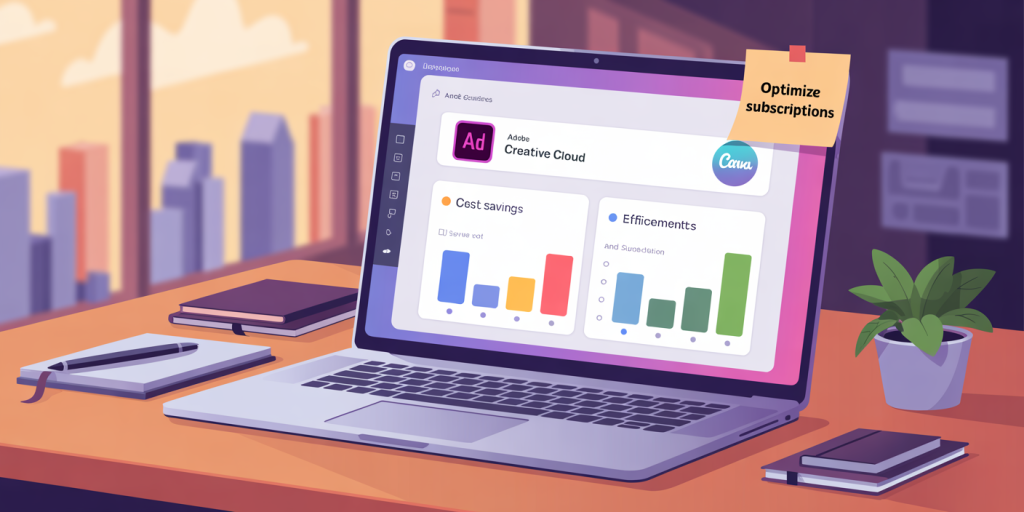In the age of digital convenience, subscription services have become an integral part of everyday life. From streaming platforms and meal kits to fitness apps and cloud storage, subscriptions promise ease and ongoing value for a monthly fee. However, accumulating multiple subscriptions can quietly erode finances, especially when usage dwindles or services overlap. Many consumers unknowingly pay for subscriptions they rarely use or don’t need at all, highlighting the importance of regularly reviewing and trimming these recurring expenses.

According to a 2023 survey by WestMonroe, the average American spends approximately $237 per month on subscriptions, with a significant portion being underutilized or forgotten altogether. This trend underscores a growing need for disciplined subscription management to ensure spending aligns with actual needs and provides genuine value. Below, we explore key subscriptions that are often ripe for cancellation, complete with practical insights, comparative analyses, and data-backed recommendations to help readers optimize their subscriptions.
Streaming Services: Overlapping Content and Rising Costs
Streaming wars have intensified, with companies like Netflix, Disney+, HBO Max, and Amazon Prime Video competing for subscribers through diverse and exclusive content libraries. While subscribing to one or two platforms can enhance entertainment choices, many consumers fall into the trap of maintaining multiple streaming accounts simultaneously.
Why Cutting Back Makes Sense
Data from a 2023 Deloitte report indicates that 47% of U.S. households subscribe to three or more streaming services but actively use only one or two regularly. Users often subscribe impulsively to catch a trending show and forget to cancel once the binge is over. This leads to wasted subscription fees accumulating to hundreds annually.
Consider the case of Amy, a 32-year-old professional who subscribes to Netflix ($15.49/month), Disney+ ($7.99/month), Apple TV+ ($6.99/month), and HBO Max ($14.99/month). Her total is nearly $45/month or $540 annually. She realizes after tracking usage for a month, Netflix and Disney+ cover 90% of her viewing needs, prompting her to cancel HBO Max and Apple TV+. This simple adjustment saves her over $260 per year.
Comparative Table: Popular Streaming Service Costs and Content Overlap
| Streaming Service | Monthly Cost (USD) | Key Content Highlights | Content Overlap |
|---|---|---|---|
| Netflix | $15.49 | Diverse originals, drama, documentaries | Available on none others |
| Disney+ | $7.99 | Disney, Marvel, Star Wars, National Geographic | Some shared franchises with Hulu (Disney-owned) |
| HBO Max | $14.99 | Warner Bros., HBO originals, DC Universe | Some exclusivity in originals |
| Amazon Prime Video | $14.99 (with Prime) | Variety of movies, TV shows, Prime benefits | Varies, overlaps with some Netflix/others |
| Apple TV+ | $6.99 | Apple originals, exclusive movies | Minimal overlaps |
Reducing multiple streaming subscriptions to a manageable number allows consumers to enjoy quality content without hidden financial drain. Evaluating viewing habits quarterly helps keep subscriptions aligned with actual consumption.
Fitness and Wellness Apps: Paying for Motivation You Don’t Use
The health and wellness industry has witnessed a boom in subscription-based fitness apps offering everything from guided yoga sessions to personalized strength training plans and meditation. Popular apps like Peloton, Calm, and MyFitnessPal boast millions of subscribers worldwide. While these services can incentivize active lifestyles, inactivity or evolving priorities often render such subscriptions wasteful.
Real-Life Example: Minimal Use of Expensive Fitness Apps
Mark, a 45-year-old office worker, subscribed to Peloton Digital for $12.99/month after enjoying a free trial during lockdowns. However, as gyms reopened, he stopped using the app but continued the subscription ritualistically. Over a year, this non-use cost him $156. Upon realizing, he canceled the Peloton subscription and switched to free YouTube workout videos, redirecting money to his gym membership instead.
Market research from Statista reveals that 30% of paid fitness app subscriptions go unused after the first three months, emphasizing the necessity of reassessment. Users should track their goals and usage to avoid nebulous spending on motivation that no longer fits their lifestyle.

Best Practices Assess fitness goals and available alternatives before subscribing. Utilize free trials fully to gauge app suitability. Cancel or pause subscriptions during non-usage phases (e.g., travel, injury).
Digital Tools and Software Subscriptions: Hidden Recurring Fees
In a digitally driven economy, software subscriptions for productivity suites, cloud storage, graphic design tools, or website builders are commonplace. Many businesses and freelancers rely on Adobe Creative Cloud, Microsoft 365, Dropbox, or Canva Pro, often paying monthly or annual fees for features that may overlap.
Identifying Redundant Subscriptions
Jenna, a freelance graphic designer, subscribed to both Adobe Creative Cloud for $54.99/month and Canva Pro for $12.99/month. Over time, she noticed most of her projects could be completed using only Adobe’s suite. She canceled Canva Pro, effectively saving $156 annually without sacrificing functionality.
More broadly, a 2022 report from TechRepublic found that 40% of organizations had at least one redundant software subscription, costing thousands per year. This reflects similar opportunities for individuals to consolidate subscriptions by choosing comprehensive tools and eliminating extras.
Table: Software Subscriptions for Creatives
| Software Service | Monthly Cost (USD) | Primary Use | Suitable for | Overlap Potential |
|---|---|---|---|---|
| Adobe Creative Cloud | $54.99 | Photo/video editing, design | Professionals | Canva, other editors |
| Canva Pro | $12.99 | Graphic design, templates | Beginners/Non-designers | Adobe, PicMonkey |
| Microsoft 365 | $9.99 (Personal) | Office suite, cloud storage | General users | Google Workspace |
| Dropbox | $9.99 | Cloud storage | File sharing/storage | Google Drive, OneDrive |
Consolidating software tools helps reduce subscription fatigue and enhances workflow efficiency while trimming expenses.

Meal Kit and Specialty Food Services: Convenience vs. Cost
Meal kit delivery services like Blue Apron, HelloFresh, and Home Chef have popularized convenient home-cooked meals. These services can save time and reduce food waste but often come at a premium compared to traditional grocery shopping.
Why Consider Cancelling or Pausing These Options
According to a 2023 market survey by Statista, the average meal kit subscription costs around $60 to $80 weekly, translating to $240 to $320 monthly for a typical family plan. For comparison, the USDA estimates average monthly grocery spending for a family of four at $700, depending on region and diet. While meal kits add convenience, frequent users may find the cumulative cost unsustainable.
Take the example of Sarah, who initially subscribed to HelloFresh to learn meal prep but discovered that buying ingredients herself and using online recipes cut her monthly food expenses by 25%. After three months, she canceled the meal kit subscription and saved approximately $250 per quarter.
Considerations for Pausing Instead of Cancelling Seasonal promotions or health goals (e.g., weight loss) might temporarily increase use. Pausing subscriptions during vacations or busy periods avoids wasting meals. Using grocery delivery offers similar convenience at a lower cost.
Magazine and News Subscriptions: Digital Alternatives and Information Overload
Long a staple of household media, magazine and newspaper subscriptions have moved predominantly online. Outlets like The New York Times, The Wall Street Journal, and The Economist offer digital access for $15–$40 per month. However, many readers over-subscribe or pay for multiple overlapping news sources.
Evaluating News Subscription Needs
Digital subscriptions to news outlets grew 18% in 2023, partly driven by paywalls and exclusive reporting. But, studies suggest subscribers often consume content from only one or two sources regularly, with the rest going unused. For instance, Jessica subscribed to The New York Times ($17/month) and The Washington Post ($12/month). Realizing she mostly read local news and opinion pieces from the Post, she canceled the Times subscription to focus her spending.
Alternatives and Bundling Options
Bundling news subscriptions or relying on aggregation apps can deliver broad news coverage economically. Additionally, many reputable news organizations offer free newsletters, podcasts, and limited free articles monthly.
Future Perspectives: Smarter Subscription Management Tools and Trends
Looking ahead, subscription management is set to become increasingly sophisticated. Financial technology companies are releasing apps that track, analyze, and even automate the cancellation of underutilized subscriptions. For example, services like Truebill, Bobby, and Trim scan bank transactions, categorize subscription payments, and alert users to inactive services.
Emerging Trends and Consumer Behavior AI-Powered Analytics: AI systems will predict subscription value based on usage patterns, helping consumers decide what to keep or cancel. Consolidated Membership Models: Some companies are offering all-in-one subscription “super packs” consolidating multiple services, which may simplify ownership and reduce costs. Sustainability Concerns: As environmental awareness grows, consumers may opt to cancel subscriptions contributing to digital waste or unsustainable practices.
According to a McKinsey report, over 60% of subscribers intend to manage or reduce their subscriptions more actively within the next two years. This suggests heightened awareness will drive demand for transparent billing and flexible subscription options.
Regularly auditing subscriptions and making informed decisions can save hundreds or thousands annually while eliminating financial stress. By focusing on essential services that align with personal needs and lifestyle, consumers can optimize their spending and enjoy the benefits of subscriptions without the burden of wasted costs. Whether it’s trimming overlapping streaming platforms, rethinking fitness apps, or consolidating software tools, proactive subscription management is a crucial step toward financial well-being in 2024 and beyond.